The Transnational Appeal of Anime Militarism
In 2011, to celebrate its 20th anniversary, the Japan Self Defence Force’s 4th Anti-Tank Helicopter Unit rolled out a Cobra attack helicopter with a kawaii (cute) anime character painted on the side. The character, affectionately named Aoi-chan by soldiers, is emblematic of moe aesthetics in anime – cutesy, childlike femininity, complete with big eyes, pale…
Recent posts
-
-
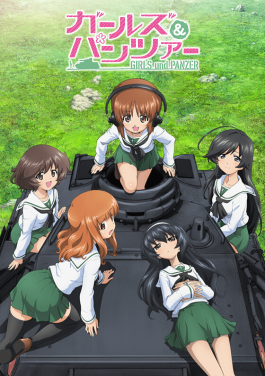
The Transnational Appeal of Anime Militarism
In 2011, to celebrate its 20th anniversary, the Japan Self Defence Force’s 4th Anti-Tank Helicopter Unit rolled out a Cobra attack helicopter with a kawaii (cute) anime character painted on the side. The character, affectionately named Aoi-chan by soldiers, is emblematic of moe aesthetics in anime – cutesy, childlike femininity, complete with big eyes, pale…
-

Kobayashi Yoshinori and Fascist Manga
By the late 1990s, life had turned precarious for young Japanese. The economic bubble had burst, and decades of rapid growth had ended in stagnation. Japanese in their late teens and early 20s had grown up being promised a good education and lifetime employment, but now were struggling to pay for university and working as…
-
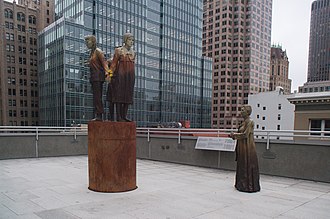
Women and Feminity in the Japanese Right
Anger is a mainstay of the Japanese far-right. During Asanuma Inejirō’s fatal 1960 speech, he was drowned out by rightist shouts before one of them stabbed him. When Nagasaki Mayor Motoshima Hitoshi suggested in 1989 that Emperor Hirohito bore some war responsibility, the right responded by shouting slogans outside his house. And during a G8…
-
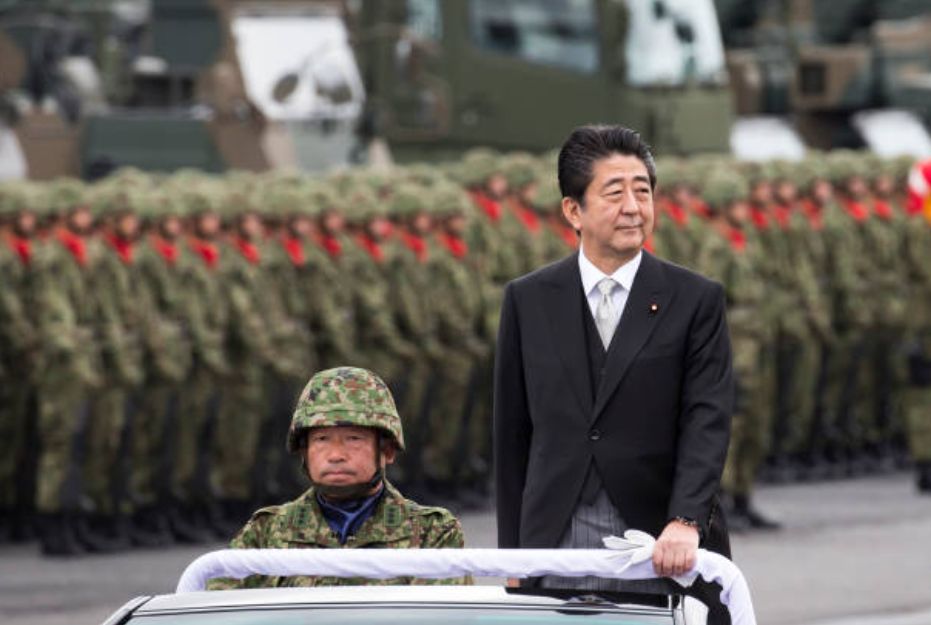
Postwar Militarism – A Return to Fascism?
In July 2016, following a landslide Liberal Democratic Party victory in Japan’s Upper House elections, the conservative American magazine National Review published an article titled ‘Japan Reverts to Fascism.’ The article rightly points out that Prime Minister Abe Shinzo and most of his cabinet were members of the radically conservative Nippon Kaigi (Japan Conference), which…
-
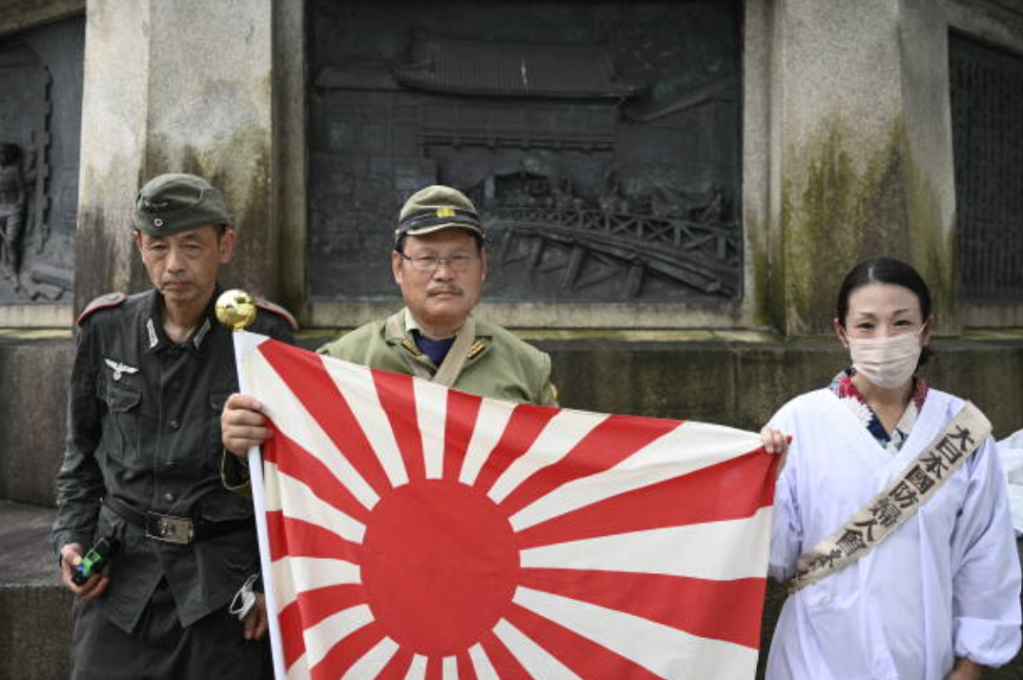
Yasukuni Shrine and the Religious Right
Since 2015, Nakatani Tōichi has been publicising the details of his brother Sakatarō’s death during the Korean War. Following WW2, Japan was occupied and formally demilitarised by the US – the new constitution, enacted in 1947, includes Article 9, which forbids Japan from waging war or maintaining a military. The onset of war in Korea,…
-

Mishima Yukio and Fascist Aesthetics
On 25th November, 1970, Mishima Yukio entered a Japan Self-Defence Forces Base in central Tokyo. Mishima was dressed in a military-style uniform complete with a hachimaki Japanese flag headband, inscribed with the last words of the brother of Kasunoki Masashige, the samurai so revered by Asanuma Inejirō’s assassin. Mishima took the base commandant hostage, stepped…
-

Leftist Protest, Rightist Response
In 1948, Kishi Nobusuke walked free from Sugamo Prison. He had headed industrial policy in colonial Manchuria in the 1930s, placing power in the hands of bureaucrats and soldiers rather than politicians. In 1944-5, he led the National Defence Brotherhood, a radical rightist group of soldiers and civilians who attempted to prolong the war; some…
-

Assassins in the Early 1960s
1960 was a major watershed moment in Japanese politics. June saw the apogee of protests over the US-Japan Security Treaty, or Anpo, and in July the Prime Minister, Kishi Nobusuke, resigned in triumph, having forced the treaty through. Anpo was a significant moment for the history of postwar fascism, not least because Kishi himself had…
-
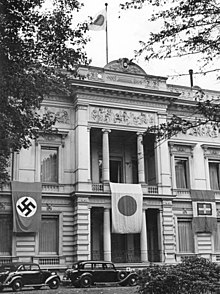
Can We Use the F-Word?
This post is far longer and more complex than I intended, and I hope no other piece in this project will need to approach this length. For one thing, I write essays as a form of note-taking, to get my thoughts in order, and I have a lot of thoughts about ‘fascist Japan.’ Secondly, even…
-
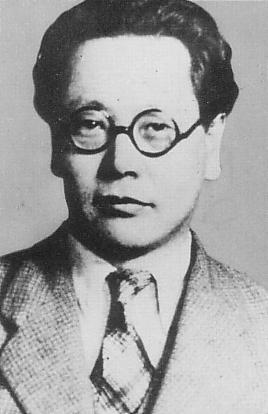
Tosaka Jun and Fascism
This post begins to consider how Japanese scholars have justified the use of the term ‘fascism,’ and I thought it important to start with Tosaka Jun, who wrote during the period which some define as fascist. Tosaka was a Marxist philosopher who published many of his thoughts on fascism in Japan in his book, The…
-
-
-

The Transnational Appeal of Anime Militarism
In 2011, to celebrate its 20th anniversary, the Japan Self Defence Force’s 4th Anti-Tank Helicopter Unit rolled out a Cobra attack helicopter with a kawaii (cute) anime character painted on the side. The character, affectionately named Aoi-chan by soldiers, is emblematic of moe aesthetics in anime – cutesy, childlike femininity, complete with big eyes, pale…
-

Kobayashi Yoshinori and Fascist Manga
By the late 1990s, life had turned precarious for young Japanese. The economic bubble had burst, and decades of rapid growth had ended in stagnation. Japanese in their late teens and early 20s had grown up being promised a good education and lifetime employment, but now were struggling to pay for university and working as…
-

Women and Feminity in the Japanese Right
Anger is a mainstay of the Japanese far-right. During Asanuma Inejirō’s fatal 1960 speech, he was drowned out by rightist shouts before one of them stabbed him. When Nagasaki Mayor Motoshima Hitoshi suggested in 1989 that Emperor Hirohito bore some war responsibility, the right responded by shouting slogans outside his house. And during a G8…
-

Postwar Militarism – A Return to Fascism?
In July 2016, following a landslide Liberal Democratic Party victory in Japan’s Upper House elections, the conservative American magazine National Review published an article titled ‘Japan Reverts to Fascism.’ The article rightly points out that Prime Minister Abe Shinzo and most of his cabinet were members of the radically conservative Nippon Kaigi (Japan Conference), which…
-

Yasukuni Shrine and the Religious Right
Since 2015, Nakatani Tōichi has been publicising the details of his brother Sakatarō’s death during the Korean War. Following WW2, Japan was occupied and formally demilitarised by the US – the new constitution, enacted in 1947, includes Article 9, which forbids Japan from waging war or maintaining a military. The onset of war in Korea,…
-

Mishima Yukio and Fascist Aesthetics
On 25th November, 1970, Mishima Yukio entered a Japan Self-Defence Forces Base in central Tokyo. Mishima was dressed in a military-style uniform complete with a hachimaki Japanese flag headband, inscribed with the last words of the brother of Kasunoki Masashige, the samurai so revered by Asanuma Inejirō’s assassin. Mishima took the base commandant hostage, stepped…
-

Leftist Protest, Rightist Response
In 1948, Kishi Nobusuke walked free from Sugamo Prison. He had headed industrial policy in colonial Manchuria in the 1930s, placing power in the hands of bureaucrats and soldiers rather than politicians. In 1944-5, he led the National Defence Brotherhood, a radical rightist group of soldiers and civilians who attempted to prolong the war; some…
-

Assassins in the Early 1960s
1960 was a major watershed moment in Japanese politics. June saw the apogee of protests over the US-Japan Security Treaty, or Anpo, and in July the Prime Minister, Kishi Nobusuke, resigned in triumph, having forced the treaty through. Anpo was a significant moment for the history of postwar fascism, not least because Kishi himself had…
-

Can We Use the F-Word?
This post is far longer and more complex than I intended, and I hope no other piece in this project will need to approach this length. For one thing, I write essays as a form of note-taking, to get my thoughts in order, and I have a lot of thoughts about ‘fascist Japan.’ Secondly, even…
-

Tosaka Jun and Fascism
This post begins to consider how Japanese scholars have justified the use of the term ‘fascism,’ and I thought it important to start with Tosaka Jun, who wrote during the period which some define as fascist. Tosaka was a Marxist philosopher who published many of his thoughts on fascism in Japan in his book, The…
-
-
-

The Transnational Appeal of Anime Militarism
In 2011, to celebrate its 20th anniversary, the Japan Self Defence Force’s 4th Anti-Tank Helicopter Unit rolled out a Cobra attack helicopter with a kawaii (cute) anime character painted on the side. The character, affectionately named Aoi-chan by soldiers, is emblematic of moe aesthetics in anime – cutesy, childlike femininity, complete with big eyes, pale…
-

Kobayashi Yoshinori and Fascist Manga
By the late 1990s, life had turned precarious for young Japanese. The economic bubble had burst, and decades of rapid growth had ended in stagnation. Japanese in their late teens and early 20s had grown up being promised a good education and lifetime employment, but now were struggling to pay for university and working as…
-

Women and Feminity in the Japanese Right
Anger is a mainstay of the Japanese far-right. During Asanuma Inejirō’s fatal 1960 speech, he was drowned out by rightist shouts before one of them stabbed him. When Nagasaki Mayor Motoshima Hitoshi suggested in 1989 that Emperor Hirohito bore some war responsibility, the right responded by shouting slogans outside his house. And during a G8…
-

Postwar Militarism – A Return to Fascism?
In July 2016, following a landslide Liberal Democratic Party victory in Japan’s Upper House elections, the conservative American magazine National Review published an article titled ‘Japan Reverts to Fascism.’ The article rightly points out that Prime Minister Abe Shinzo and most of his cabinet were members of the radically conservative Nippon Kaigi (Japan Conference), which…
-

Yasukuni Shrine and the Religious Right
Since 2015, Nakatani Tōichi has been publicising the details of his brother Sakatarō’s death during the Korean War. Following WW2, Japan was occupied and formally demilitarised by the US – the new constitution, enacted in 1947, includes Article 9, which forbids Japan from waging war or maintaining a military. The onset of war in Korea,…
-

Mishima Yukio and Fascist Aesthetics
On 25th November, 1970, Mishima Yukio entered a Japan Self-Defence Forces Base in central Tokyo. Mishima was dressed in a military-style uniform complete with a hachimaki Japanese flag headband, inscribed with the last words of the brother of Kasunoki Masashige, the samurai so revered by Asanuma Inejirō’s assassin. Mishima took the base commandant hostage, stepped…
-

Leftist Protest, Rightist Response
In 1948, Kishi Nobusuke walked free from Sugamo Prison. He had headed industrial policy in colonial Manchuria in the 1930s, placing power in the hands of bureaucrats and soldiers rather than politicians. In 1944-5, he led the National Defence Brotherhood, a radical rightist group of soldiers and civilians who attempted to prolong the war; some…
-

Assassins in the Early 1960s
1960 was a major watershed moment in Japanese politics. June saw the apogee of protests over the US-Japan Security Treaty, or Anpo, and in July the Prime Minister, Kishi Nobusuke, resigned in triumph, having forced the treaty through. Anpo was a significant moment for the history of postwar fascism, not least because Kishi himself had…
-

Can We Use the F-Word?
This post is far longer and more complex than I intended, and I hope no other piece in this project will need to approach this length. For one thing, I write essays as a form of note-taking, to get my thoughts in order, and I have a lot of thoughts about ‘fascist Japan.’ Secondly, even…
-

Tosaka Jun and Fascism
This post begins to consider how Japanese scholars have justified the use of the term ‘fascism,’ and I thought it important to start with Tosaka Jun, who wrote during the period which some define as fascist. Tosaka was a Marxist philosopher who published many of his thoughts on fascism in Japan in his book, The…
-